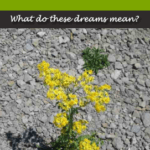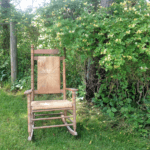Dream Dictionary (Dream Guide): New Dream Entries Added
Dreams From A to Z, as Well as Colors in Dreams and Dream Numbers
What do Dracula Dreams Mean? Find out in the Dream Dictionary!
As you can tell, there have been a lot of changes at Dream Prophesy. I tried several different looks and themes until I found one that works perfectly for my dreamers. I’m trying to make it easier for you to find the meaning or meanings behind your dreams. On the front page of the website, midway down, you’ll find a huge search box that’ll allow you to enter a dream symbol and retrieve results that’ll help you interpret your dream.
There is also a search box on the side of each page of the website.
Dream Dictionary and A- Z Dream Guide
I’ve been working a lot (make that A LOT) on the dream dictionary (A – Z guide) on Dream Prophesy. New entries have been added, along with beautiful pictures. You can find the Dream Dictionary pages by hovering over Dream Dictionary in the Menu Bar at the top of each page. Simply click on the alphabetical page that best describes symbols and/or emotions pertaining to your dream.
For the best dream analysis and interpretation, be sure to look up each word you can think of that’s associated with your dream. The dream guide is growing, daily, so if you’re unable to find a word you’re looking for today, be sure to check tomorrow!
What Colors Mean in Dreams
I’ve also added a page entirely devoted to colors in dreams. Different colors actually mean different things and this page will sort it all out for you. I’ll let you in on a little secret… very often the dream’s analysis and/or interpretation has more to do with the colors in your dream than with the symbols or even emotions. You can find the link to the color guide in the menu bar at the top of each page.
What Numbers Mean in Dreams
Like colors, numbers also can carry a lot of meaning when it comes to dreams. The reason for this is simple, if you REMEMBER a particular number from your dream, it is an important piece to the puzzle. If the fact that you saw, say, 3 cats on a swing, and the number sticks with you, it is important.
If, however, you simply recall “cats on a swing,” the number isn’t important. The numbers in dreams link is also found at the top of each page.
Why Ancient Dream Guides Aren’t as Relevant Today
There are a lot of ancient, outdated dream guides and dictionaries online and in bookstores and, while I don’t want to be rude, they will not serve you as well as a very up to date dream dictionary and dream guide, such as the one on Dream Prophesy. Don’t get me wrong, they’re entertaining and I even own a few myself. They’re just kind of fun, let’s be honest.
However, if you want an accurate dream interpretation for a modern dream, you MUST have a modern dream dictionary.
Here are a few reasons:
- Ancient and Outdated Dream Guides Rely Way too Much on Luck! One of the more entertaining ancient dream guides in my collection attaches “omens,” “good luck,” and “bad luck” to just about every dream. We know, today, that that’s all a bunch of nonsense. Dreams do not tell fortunes. Do dreams sometimes seem to come true? Yes. But the reason is simple – some people are incredibly intuitive. They perceive danger, not by hocus pocus, but by keen judgement and a supremely trained knowledge of their surroundings. Some people are more dialed in to their surroundings and the world around them than others and these people can often “sense” trouble. They may detect that another individual’s actions are dangerous and could lead to trouble. If they happen to dream that this individual gets in trouble, the dream didn’t foretell the future, their own keen intuition did. Many people give their dreams far too much credit and themselves far too little credit. Dreams are not good or bad luck and they certainly are not omens.
- Outdated Dream Guides and Dictionaries Have Outdated Words. Our lingo is different than it was 10 years ago, let alone 50 years ago. It only stands to reason that if terminology changes, so do meanings and interpretations. Our dictionary is… and will continue to be… updated frequently to include new terminology and changing interpretations.
- Times Change, Period. Here’s an example I use frequently when explaining the importance of an updated, up to the minute dream dictionary: In the 1950’s, if an individual had a dream about a television, it would have carried a lot more weight than you or me dreaming about one today. Most of us, today, have more than one television, whereas in the 50’s a tv set was quite a luxury item! Here’s another favorite example – Women. Years ago, we females were viewed a lot differently than today. Thank God things have changed! Outdated dream dictionaries can be pretty condescending toward females – without really meaning to be, of course. The same is true for different races and nationalities. Think about it – we simply know so much more today than we knew then. So, if this much has changed, how can anyone think for one minute that dream interpretations don’t change?!
Finally – a reminder: Dreams are fascinating, dreams are fun, dreams are cool. They are, however, not omens and they do not determine your future. If you have a troubling dream, try to determine what’s behind it if you choose to, then walk away from it and wait for the next dream.
A Few Things Coming Up on Dream Prophesy:
In addition to diving into more dreams and dream meanings, we’re also going to start having a lot of articles and information about sleep problems, improving your sleep, overcoming things such as night terrors and recurring nightmares, etc.
Big plans! I hope you’ll help spread the word about Dream Prophesy by sharing links on social media, forums, your blog – basically everywhere you can. The more people involved in the comments, the funner it is for everyone. Plus, very often, I learn from your dreams and experiences – so keep sharing!
Hoping your dreams are nothing but sweet! ~ Joi (“Joy”)
Fascinating Q & A With Dream Expert and Author Robert Moss
 Robert Moss is the creator of Active Dreaming, an original method of dreamwork and healing through the imagination. Born in Australia, he survived three near-death experiences in childhood. He leads popular seminars all over the world, including a three-year training for teachers of Active Dreaming and a lively online dream school. A former lecturer in ancient history at the Australian National University, he is a bestselling novelist, journalist, and independent scholar. His seven books on dreaming, shamanism and imagination include Conscious Dreaming, Dreamways of the Iroquois, The Three “Only” Things, The Secret History of Dreaming, and Dreamgates: Exploring the Worlds of Soul, Imagination, and Life Beyond Death.
Robert Moss is the creator of Active Dreaming, an original method of dreamwork and healing through the imagination. Born in Australia, he survived three near-death experiences in childhood. He leads popular seminars all over the world, including a three-year training for teachers of Active Dreaming and a lively online dream school. A former lecturer in ancient history at the Australian National University, he is a bestselling novelist, journalist, and independent scholar. His seven books on dreaming, shamanism and imagination include Conscious Dreaming, Dreamways of the Iroquois, The Three “Only” Things, The Secret History of Dreaming, and Dreamgates: Exploring the Worlds of Soul, Imagination, and Life Beyond Death.
Moss’s Active Dreaming is an original synthesis of contemporary dreamwork and shamanic methods of journeying and healing. A central premise of Moss’s approach is that dreaming isn’t just what happens during sleep; dreaming is waking up to sources of guidance, healing and creativity beyond the reach of the everyday mind. He introduced his method to an international audience as an invited presenter at the conference of the International Association for the Study of Dreams at the University of Leiden in 1994.
Over the past fifteen years, he has led seminars at the Esalen Institute, Kripalu, the Omega Institute, the New York Open Center, Bastyr University, John F. Kennedy University, Meriter Hospital, and many other centers and institutions. He has taught in-depth workshops in Active Dreaming in the UK, Australia, Canada, Costa Rica, France, the Netherlands, Denmark, Lithuania, Romania, and Austria and leads a three-year training course for teachers of Active Dreaming. He leads popular online dreamwork courses at www.spirituality-health.com, writes the “Dream Life” column for Spirituality magazine, and hosts the Way of the Dreamer radio show at www.healthylife.net.
He has appeared on many TV and radio shows, ranging from Charlie Rose and the Today show to Coast to Coast, and including The Diane Rehm Show on NPR, Michael Krasny’s Forum on KQED San Francisco, The Faith Middleton Show on Connecticut Public Radio, and CBC’s Tapestry program. His articles on dreaming have been published in media ranging from Parade to Shaman’s Drum and Beliefnet.com.
His books have been published in more than twenty foreign languages.
Below, we can get into Robert’s mind and learn more about dreams and his newest book, The Secret History of Dreaming.
You are a former history professor and you say that to research and write this book you had to become a “dream archeologist”. What is “dream archeology” and what skills and resources are required to practice it?
While “archeology” is often understood to be the science of unearthing and studying antiquities, the root meaning is more profound: it is the study of the arche, the first and essential things. The practice of “dream archeology” requires mastery of a panoply of sources, and the ability to read between the lines and make connections that have gone unnoticed by specialists who were looking for something else. It requires the ability to locate dreaming in its context – physical, social and cultural. And it demands the ability to enter a different time or culture, through the exercise of active imagination, and experience it from the inside as it may have been. These are the skills we need to excavate the inner dimension of the human adventure.
What is the most important thing you can tell us about your new book, The Secret History of Dreaming?
The Secret History of Dreaming restores a missing dimension to our understanding of what drives the human adventure: the vital role of dreams and imagination in science and literature, war and religion, medicine and the survival of our kind. History without the inner side is as shallow as history without economics, and as boring as history without sex.
This is not another book about dreams. It is a history of dreaming, a term I use in an expansive sense to encompass not only night dreams but also waking visions, the interplay of mind and matter that is sometimes called synchronicity, and experiences in a creative “solution state”.
Explain your statement that a dream led directly to one of the biggest oil discoveries in world history.
In 1937, Colonel Harold Dickson, the former British Political Agent in Kuwait, dreamed that a sandstorm opened a crater under a strange tree in the desert, and revealed a mummy that came to life as a beautiful woman who gave him an ancient coin. His wife recorded the dream for him in the middle of the night, and then he consulted a Bedouin woman dream interpreter who gave him the location of the tree in his dream – in the Burqan hills – and told him he would find great treasure there. He was able to persuaded the Kuwait Oil Company (which had been drilling dry holes up to this point) and they struck it rich at the exact place he had dreamed. This was the origin of Kuwait’s oil wealth and a major source for the Allies in World War II.
Tell us about the dreams of the Founding Fathers
John Adams and Dr Benjamin Rush – who made a close study of precognitive dreams – were in the habit of exchanging dreams in their extensive correspondence. In 1809, Rush wrote to Adams about a dream in which the doctor’s son read him a page from the future history of the United States. The dream letter described “the renewal of friendship” between Adams and Thomas
Jefferson, who had been estranged for many years because of their political disagreements. It
stated that the later correspondence of the two former presidents would inspire many. And it recorded that Adams and Jefferson “sunk into the grave nearly at the same time.” Nearly seventeen years later, long after their reconciliation, the two former presidents died on the same day – July 4, 1826. The predictions on the page of Dr Rush’s dream history were exactly fulfilled.
Explain how Harriet Tubman’s dreams and visions helped her to guide escaping slaves to freedom on the Underground Railroad.
Harriet Tubman is an iconic figure in American history – the runaway slave from Maryland’s Eastern Shore who went back to the South, braving great dangers, to free her fellow-slaves and became the most successful “conductor” of the Underground Railroad. Yet the secret of Harriet Tubman’s achievement has rarely been told. She was a dreamer and a seer. In her dreams and visions, she could fly like a bird. Her gift may have been associated with a near-death experience in her childhood, when an angry overseer threw a two-pound lead weight that laid open her skull. We learn from her how great gifts can spring from our wounds. Harriet herself said she inherited special gifts – including the ability to travel outside the body and to visit the future – from her father, who “could always predict the future” In The Secret History of Dreaming, I examine the evidence that her ancestors were Ashanti, and that she may have inherited something of the Ashanti experience of dream tracking. I also look at the influence of the first, fiercely brave and inspiring, itinerant black women preachers, whose example may have helped Harriet develop the power to transfer her vision. She could sing courage into people’s hearts.
Tell us how Freud, tragically, may have missed an early dream diagnosis of the mouth cancer that killed him many years later.
The most famous of all the dreams Freud analyzed was one of his own, the Irma Dream. In The Interpretation of Dreams he gives a lengthy account of this 1895 dream and his work with it. In the dream, he inspects the mouth of a patient called Irma and discusses her condition with several doctors. The tragic irony is that in all his work on this dream, Freud may have missed a health warning that could have saved his life. I report on the exhaustive work of a cancer surgeon who compared Freud’s medical records with his dream report and concluded that the contained an amazingly exact preview of precise symptoms of the oral cancer that killed Freud 28 years later.
You write: “Because young Sam Clemens could not find Brazil, he failed to become the first cocaine dealer in North America and instead became Mark Twain.” Tell us that story!
While he was working as a printer in Keokuk, Iowa, young Sam Clemens read a book that described “a vegetable product with miraculous powers” that was growing in Brazil. Sam was “fired with a longing” to go up the Amazon, secure a supply of this miracle plant – and make a fortune. He sailed to New Orleans on a riverboat whose pilot was the celebrated Horace Bixby.
When he got to New Orleans, Sam found that no ship in port was sailing for Brazil and no one could tell him how to get there. So he changed his plans, sought out Bixby, and persuaded him to take him on as an apprentice pilot. Working on the Mississippi river, he got many of the ideas for the books that made him famous under a pen-name borrowed from the boatmen’s cry “Mark Twain”, meaning two fathoms, safe water.
The miracle plant Sam had set out to find was coca. Had he succeeded in his original plan, Keokuk, Iowa would have become the cocaine capital of America. Because Sam Clemens couldn’t find Brazil, he failed to become the first cocaine dealer in North American history and instead became Mark Twain.
Tell us about the mystery of the Chinese Woman in Wolfgang Pauli’s dreams that Jung could not figure out.
The quantum physicist Wolfgang Pauli frequently dreamed of an alluring “Chinese woman” who moved like a snake dancer. Though he found her sexy, she sometimes appeared in situations that filled him with dread, as if his world was being shaken. He was also distressed by a dream in which the Chinese woman had a baby the world would not acknowledge. Paul discussed these dreams with Jung, and Jung talked of archetypes and the anima. Then Pauli’s “Chinese woman” stepped out of his dream life and into the world at the center of the so-called “Chinese revolution” in physics. A woman physicist, Dr Wu, conducted the critical experiments that overthrew one of the scientific paradigms (the parity principle) that Pauli had fiercely upheld, shaking his intellectual universe. Yet when a Nobel prize was awarded for this breakthrough in 1957, only the two theoretical physicists – both men – were recognized; the Chinese woman’s baby went unacknowledged by the world.
I explore this episode in my investigation of the rich 25-year correspondence between Jung and Pauli. They were giants in their respective fields – depth psychology and physics – who goaded each other, in a 25-year intellectual friendship, to step beyond the boundaries of their disciplines and seek to develop a working model of a universe in which mind and matter are constantly interweaving. But they were capable of missing dream clues!
Tell us about the woman you call “the beautiful dream spy of Madrid.”
Ah, the lovely Lucrecia de Leon! When she was a guest of the Spanish Inquisition, one of the investigators told her, “You are so beautiful a dead man would rise up and make you pregnant.” Since women are absent from so much of the history written by men, it is remarkable that – thanks in part to the Spanish Inquisition – the record of no fewer than 415 dreams of a young woman of Madrid have survived from the time of the Spanish Armada. They were transcribed between 1587 and 1590, by clerics who listened to her accounts of her night adventures while an armed courier waited in the street ready to gallop to the holy city of Toledo to carry the latest dream installment to the head of the powerful Mendoza clan, second only to the Habsburgs in Spain. The reason Lucrecia’s dreams were so prized was that she had a gift for seeing the future and discovering what was going on behind closed doors, in the royal palace or the house of Sir Francis Drake in England. Her dreams were exploited as sources of military intelligence and as political propaganda, in a time when dream visions were still greatly respected. Some of them were painted; others were performed as theatre for high society in the town house of a dowager duchess who may also have been an English agent. Lucrecia’s story is a fascinating chapter in the history of women as well as the history of dreaming.
You are the creator of an original approach to dreamwork and healing that you call Active Dreaming. What is Active Dreaming? Will you give us examples of original techniques you have developed, and tell us how they differ from other approaches to dream interpretation or analysis?
Active Dreaming is founded on the understanding that dreaming isn’t just what happens during sleep; dreaming is waking up to sources of guidance, healing and creativity beyond the reach of the everyday mind.
One of the most important original techniques I have introduced is the Lightning Dreamwork Game, a fast and fun way to share inner experiences, get helpful feedback and guidance for action that you can practice with just about anyone, almost anywhere, It’s a great inner workout, and when you play it with friends or family or workmates, you’ll find you are deepening and energizing your relationships. By simply playing the game, you’ll find you can recognize and work with diagnostic and precognitive elements in dreams, and harvest personal imagery for healing and creative projects.
I teach many techniques for conscious dream travel. This goes far beyond what “lucid dreaming” is commonly thought to be. We learn to start out lucid and stay lucid. Using shamanic techniques for shifting consciousness, we embark on intentional journeys – often with partners or a whole group – on agreed itineraries, which might take us on a mission to scout out the possible future, or explore an alternate reality or a location in the imaginal realm, or through the doorway of a previous dream or vision. We learn to travel back inside dreams to dialogue with dream characters, resolve nightmare terrors, bring through healing and guidance, and scout out the possible future.
I love leading games of coincidence and imagination, and am constantly dreaming up new ones. Active dreamers find that the world around us will speak to us in the manner of dreams if we will only pay attention. I teach people how to navigate by synchronicity, how to harvest personal imagery for healing, and how to grow a vision so deep and strong that it wants to take root in the world.
About the Author
Robert Moss was born in Australia, and his fascination with the dreamworld began in his childhood, when he had three near-death experiences and first learned the ways of a traditional dreaming people through his friendship with Aborigines. A former professor of ancient history, he is also a novelist, journalist, and independent scholar.
I’ll write my review of this outstanding book later this week – it is definitely one you’ll want to read.








RECENT COMMENTS AND SHARED DREAMS